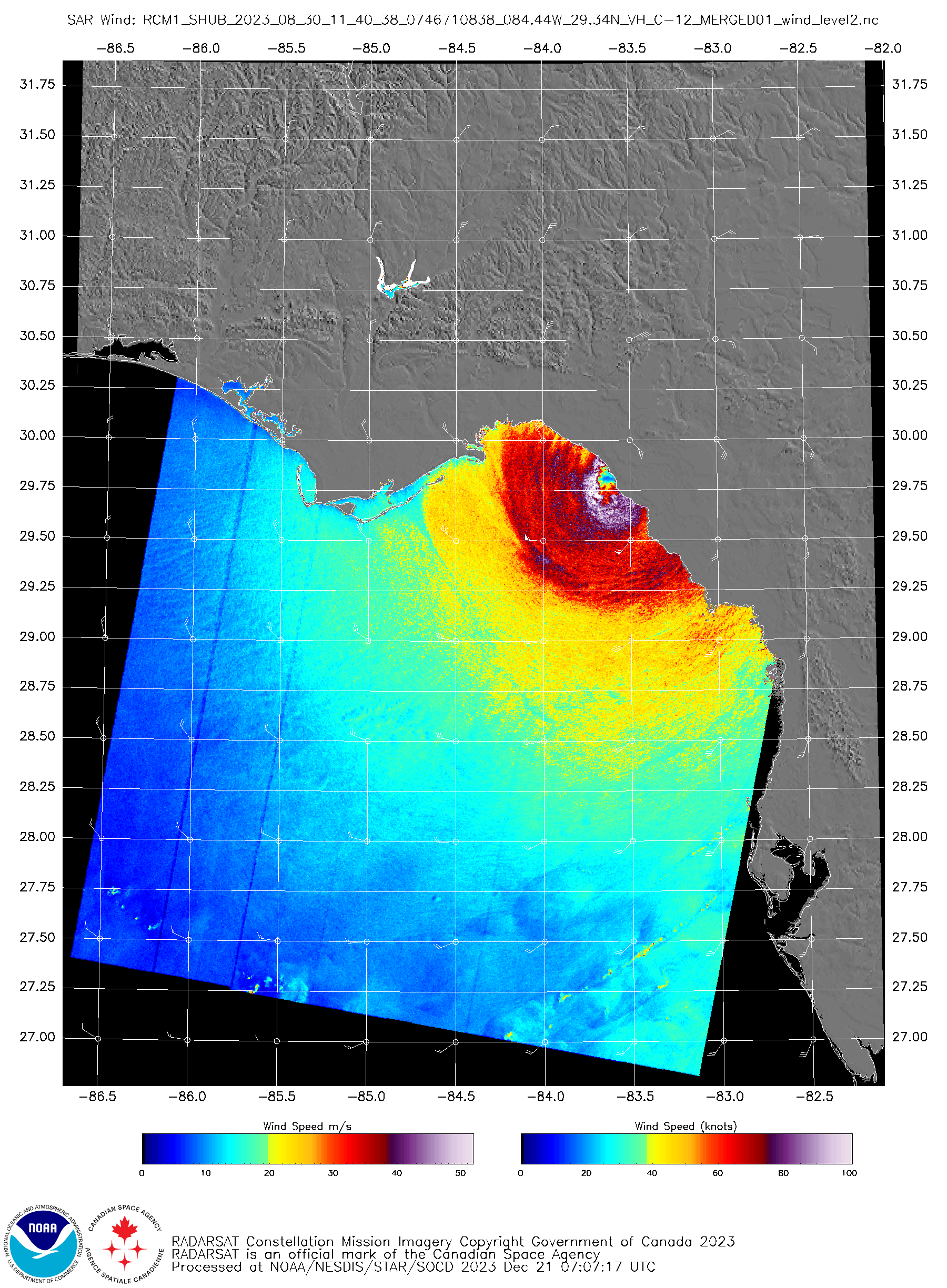
Overlapping 1-minute Mesoscale Domain Sectors provided 30-second GOES-16 (GOES-East) “Red” Visible (0.64 µm) and “Clean” Infrared Window (10.3 µm) images (with/without an overlay of GLM Flash Extent Density) (above) — which included 15-minute plots of METAR surface reports and hourly plots of Fixed Buoy reports as Category 3 Hurricane Idalia made landfall along the Big Bend coat... Read More

30-second GOES-16 “Red” Visible (0.64 µm, top) and “Clean” Infrared Window (10.3 µm, bottom) images (with/without an overlay of GLM Flash Extent Density) from 1000-1300 UTC, which include plots of 15-minute METAR surface reports (cyan) and hourly Fixed Buoy reports (green) [click to play animated GIF | MP4]
Overlapping 1-minute
Mesoscale Domain Sectors provided 30-second GOES-16
(GOES-East) “Red” Visible (
0.64 µm) and “Clean” Infrared Window (
10.3 µm) images (with/without an overlay of
GLM Flash Extent Density)
(above) — which included 15-minute plots of METAR surface reports and hourly plots of Fixed Buoy reports as Category 3
Hurricane Idalia made landfall along the Big Bend coat of Florida at
1145 UTC on
30 August 2023. The hurricane produced
winds to 85 mph and
rainfall amounts as high as 9.31 inches.
Note that the peak wind gust at the Keaton Beach buoy (KTNF1, located along the coast near the center of the GOES-16 images) was 72 knots at 1100 UTC — then the wind speed dropped to 0 knots (calm) at 1200 UTC as the eye of Idalia moved over that buoy location upon making landfall (below). The raw surface report data indicated that the continuous wind speed was 37.1 m/s (65 knots) at 1120 UTC.

Plots of Pressure (green), wind speed (blue) and wind gust (red) at Buoy KTNF1 (Keaton Beach).

Plot of peak wind gusts at Buoy KTNF1 (Keaton Beach).
An image (source) of RCM-1 Synthetic Aperture Radar (SAR) winds at 1140 UTC (just prior to the time of landfall) is shown below.

RCM-1 SAR winds at 1140 UTC [click to enlarge]
Idalia briefly reached Category 4 intensity, from
0900 UTC until shortly before landfall — 30-second GOES-16 Infrared images
(below) showed Idalia during its transition to a Category 4 Hurricane until making landfall.

30-second GOES-16 “Clean” Infrared Window (10.3 µm) images from 0430-1200 UTC, with hourly Fixed Buoy reports plotted in white [click to play animated GIF | MP4]

NOAA-20 VIIRS Day/Night Band (0.7 µm) and Infrared Window (11.45 µm) images valid at 0715 UTC [click to enlarge]
Several hours prior to landfall, a toggle between VIIRS Day/Night Band (0.7 µm) and Infrared Window (11.45 µm) images from NOAA-20 (mislabeled as NPP) valid at 0715 UTC
(above) and Suomi-NPP valid at 0805 UTC
(below) showed higher spatial resolution views of Category 3 Idalia. The eye of Idalia passed close to
Buoy 42036, where there was a
wind gust of 72 knots at 0640 UTC — and the prolonged period of strong winds associated with Idalia caused a notable decrease in
water temperature on 30 August (due to the upwelling of cooler sub-surface water).

Suomi-NPP VIIRS Day/Night Band (0.7 µm) and Infrared Window (11.45 µm) images valid at 0805 UTC [click to enlarge]
A larger-scale view of the NOAA-20 VIIRS Day/Night Band image is highlighted in
this blog post.
View only this post
Read Less























